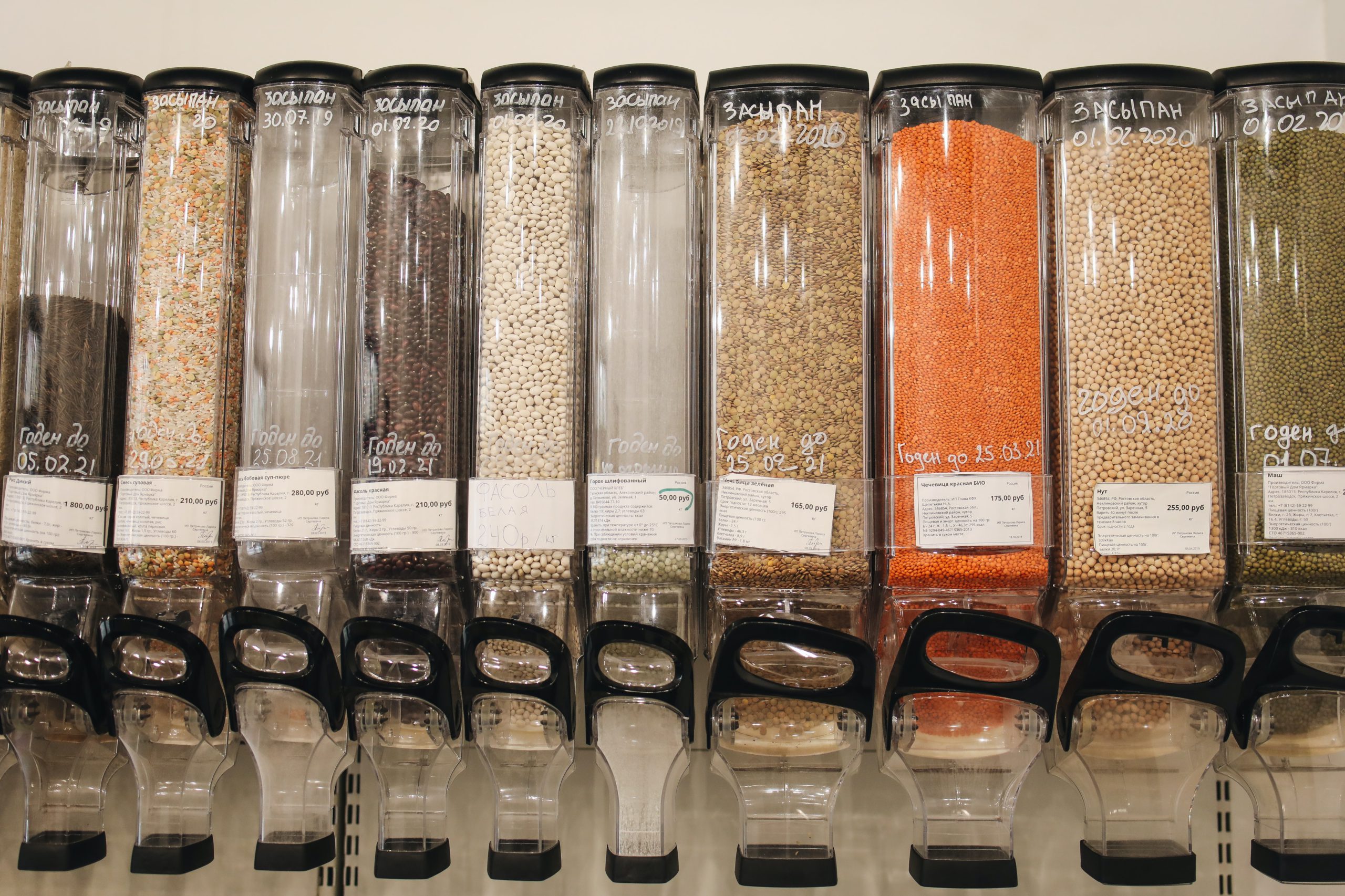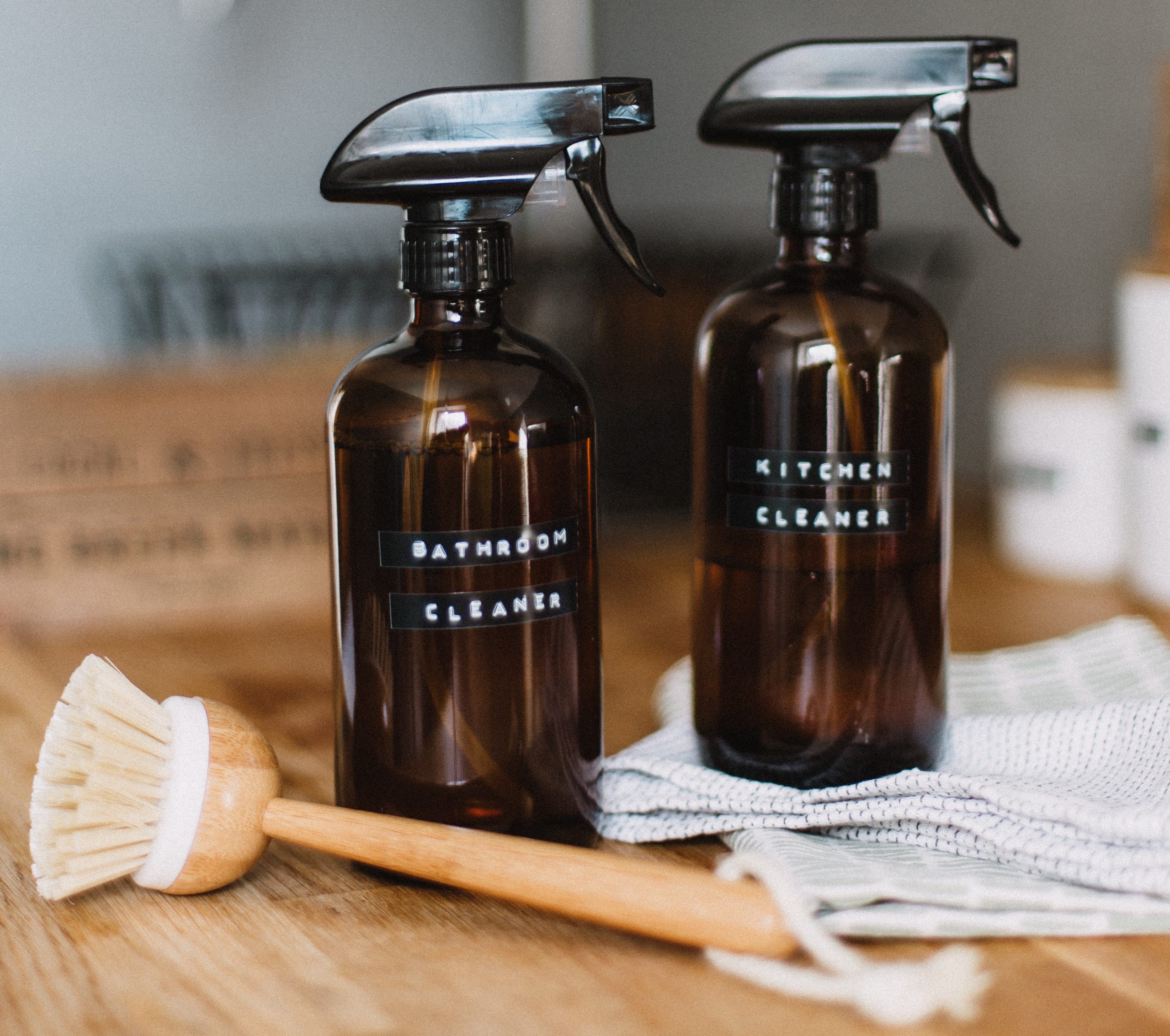Plastic is such a prevalent part of our everyday lives that it’s almost impossible to avoid. We use plastic containers to hold and package food, buy cleaning supplies sold in plastic bottles, and even wear clothing made of synthetic fabrics.
In the U.S. alone, an estimated 35.7 million tons of plastic were thrown away and ended up in landfills in 2018. And according to Plastic Oceans, 10 million tonnes of plastic are dumped into our oceans every year. That’s more than a garbage truck load a minute.

Our plastic pollution is out of control and poisoning our planet. With no improvements to managing waste beyond what’s already in place today, studies show that 99 million tons of uncontrolled plastic waste will end up in the environment by 2030.
It’s time to break our reliance on plastic products, and the good news is there are meaningful changes you can make today to begin living a more plastic-free life. Inspired by Plastic Free July®, a global movement to help people be part of the solution to plastic pollution, we’re sharing eight helpful tips for ditching plastic.
1. Get to know the numbers
An important first step in eliminating plastic is learning that not all plastics are created equal — some are incredibly toxic to you and the planet.
If you look at the bottom or side of a plastic container, you’ll see a triangle made of arrows with a number inside ranging from 1 – 7. That number represents the type of plastic used in the container. Here are the ones you should always avoid and prioritize eliminating first.

Recycling number: 03
Polyethylene Terephthalate (PVC)
- Where it can be found: Plumbing pipes, grocery bags, tiling, shoes, cling wrap, children’s toys, and personal care products like nail polish and deodorants.
- Why it should be avoided: Polyvinyl Chloride (PVC) is an incredibly toxic plastic that contains deadly additives like lead and phthalates. Avoid these plastics where possible, and toss or recycle plastics that are scratched or damaged.
Recycling number: 06
Styrene or Styrofoam (PS)
- Where it can be found: Disposable coffee cups, Styrofoam food containers, plastic cutlery, packing peanuts, and more.
- Why it should be avoided: Styrene is incredibly toxic to the brain and nervous system. Though styrene levels are generally low in food, it’s still recommended to avoid this kind of plastic.
Recycling number: 07
Polycarbonate (PC), which contains Bisphenol A (BPA)
- Where it can be found: Lining of cans, plastic CDs and DVDs, eyeglasses, lighting fixtures, sport bottles, lids, and more.
- Why it should be avoided: This plastic contains bisphenol A, which can disrupt endocrine functioning by mimicking hormones in the body or interfering with their actions. Thankfully, bisphenols can be flushed out of the body quite quickly, so cutting them out can have immediate effects.
Now that you’ve got the fundamentals down, let’s start exploring some easy ways you can begin transitioning single-use plastic out of your everyday.
2. Upgrade your water bottle
Globally, we used 480 billion plastic bottles in 2018. That’s almost 1 million every minute. That’s enough to cover half the Eiffel Tower every day.

Image sourced from: fm-magazine.com
Plastic bottles take approximately 450 years to decompose in a landfill, so get sustainable with your water consumption and invest in a reusable water bottle.
3. Bring a reusable coffee cup
Most coffee cups can’t be recycled, so if you’re a daily visitor to the local coffee shop, try and remember a reusable alternative.
And it doesn’t need to be fancy. You can bring your own mug or jar from home. Just make sure you use containers that can handle the heat and won’t spill if you’re travelling.
4. Skip single-use straws
As much as we enjoy slurping up a smoothie on the go, a staggering 500 billion plastic straws are discarded daily in the US. In landfills, they can take up to 200 years to degrade and often blow into the ocean, where they harm wildlife.

We recommend picking up a metal or glass straw that can be re-used to protect our oceans and the creatures that live there.
5. Do a plastic scan
Take a minute to observe all the plastic lurking in your kitchen or bathroom. We’re guessing you’ll probably discover everyday essentials like shampoo and dish soap are all stored in plastic containers.
Take note of all these items, and next time you need to restock these home essentials, resolve to find more sustainable alternatives, such as reusable beeswax wraps or bar shampoo.
Here are some plastic-free kitchen alternatives with recommendations from brands we love to get you started.
6. Buy more bulk food and fewer packaged products
You can skip the plastic packaging and store food at home in glass containers by buying in bulk. It’s important to note that while bulk bins make plastic-free grocery shopping easy, not everyone has access to them.

Don’t get discouraged if buying in bulk isn’t available to you. Here are a few quick tips to help cut down on the plastic waste you bring home from the grocery store.
- If you have to buy food in packaging, opt for items that come in glass, metal or paper over plastic
- Skip the single-use plastic bags and keep your produce loose or store it in a reusable bag
- Don’t forget your reusable grocery bag when you head out shopping
7. Practice plastic-free dining
Next time you’re heading out for dinner, BYOC (Bring Your Own Container) if you plan to take leftovers home from a restaurant. It may feel a little strange initially, but bringing your own container is a simple way to break your reliance on plastic.
If you’re ordering take-out, specify no plastic cutlery when you place your order. When you’re out and about, we recommend keeping a set of utensils in your bag, so you’re always prepared.
8. Try alternatives to store-bought cleaners
Not only do most cleaning supplies come in plastic containers, but when we explore the ingredients list, ‘clean’ is often the last word we’d use to describe what we find. Harmful to the environment in both packaging and ingredients, skip conventional cleaners and try making your own.
Check out this list of easy cleaners you can make at home and store in reusable glass bottles.

If you’re looking for more resources or really want to challenge yourself when it comes to cutting out plastic, check out www.plasticfreejuly.org to learn more.
Keep Reading
From Production To Destruction: A Breakdown Of The Single Use Plastic Crisis
By planting ten trees for every item you purchase, it’s our mission to plant 1 billion trees by 2030. Head to our website to learn more and get 10% off your next purchase.

